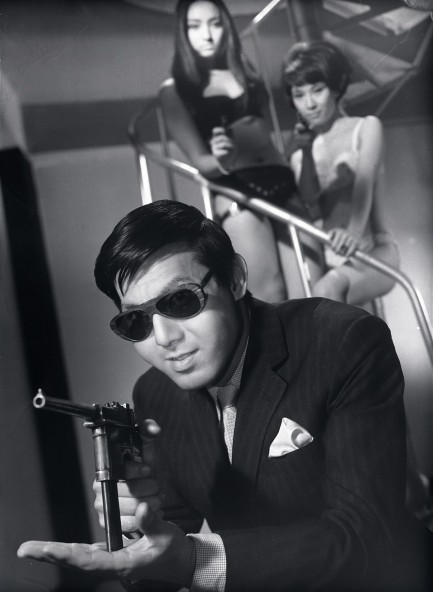| Vintage Pulp | Jun 15 2024 |


Jo Shishido fronts this poster for Koroshi no rakuin, aka Branded To Kill, flanked by armed and dangerous sidekicks Mariko Ogawa and Annu Mari. This serves as a second alternate promo to the original, which we showed you years ago. See that here, and the tateken promo here. Koroshi no rakuin premiered in Japan today in 1967.
| Vintage Pulp | May 31 2017 |

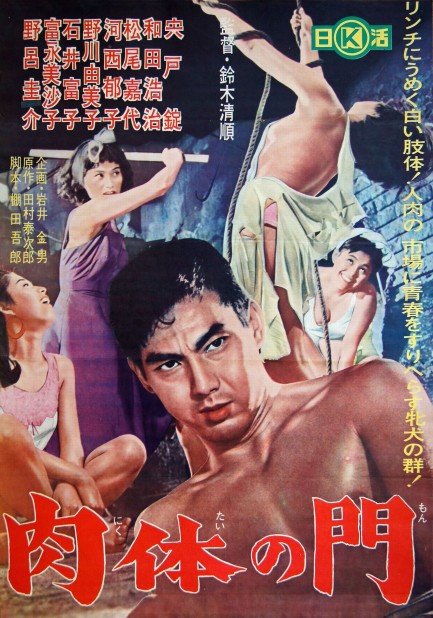
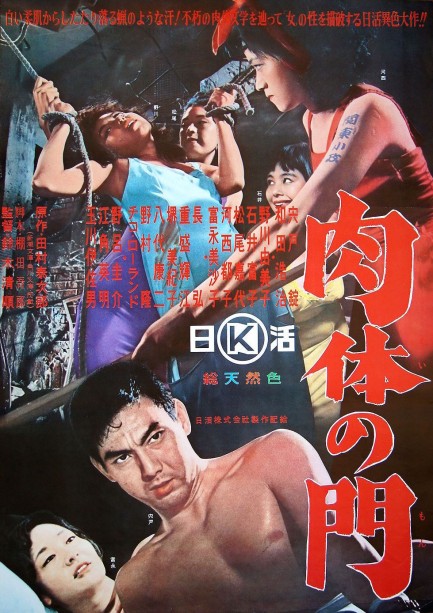
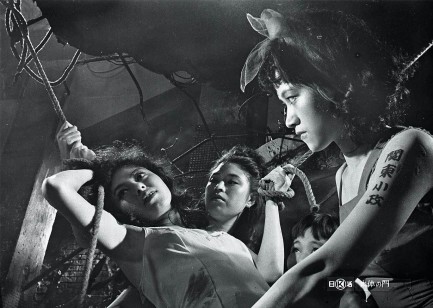
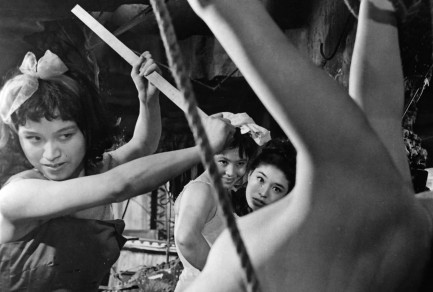
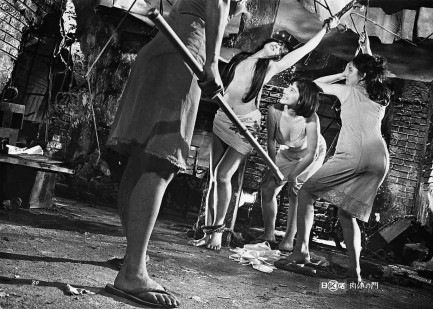
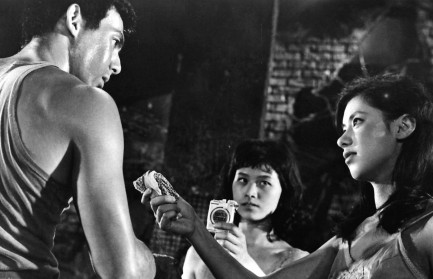
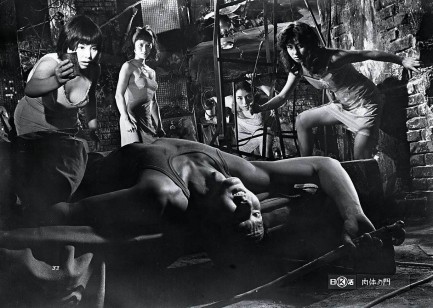
| Vintage Pulp | Jan 23 2017 |

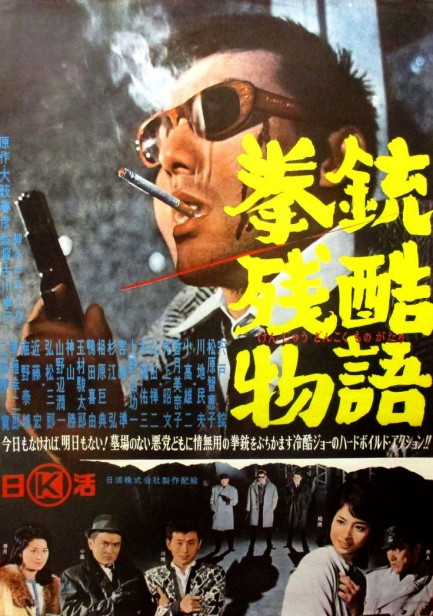
By now you've noticed this year's Noir City slate concerns heists—all the films so far have involved foolproof plans to make a big score. 1964's Kenjû zankoku monogatari, aka Cruel Gun Story is about a crew that wants to rob a race track, same as in Kubrick's The Killing. Japanese superstar Jo Shishido leads his minions on a caper that goes wrong almost immediately and eventually erupts into pyrotechnic violence. If there's a lesson here it's don't get on Shishido's bad side. Though he's preternaturally cool (really, we can't think of another star who could make exchanging close quarters gunfire while smoking a cigarette look believable), restraint in the face of aggression isn't his strong trait. When he has something serious to say, it's going to come from the muzzle of a gun. This is another Noir City offering that most sites don't label as film noir, but the influences are certainly there, and in fact the film is part of The Criterion Collection's five film Nikkatsu Noir DVD box set. We've seen Kenjû zankoku monogatari described as Nikkatsu Studios' crown jewel. We don't know about that. We'd call it an imperfect but entertaining effort.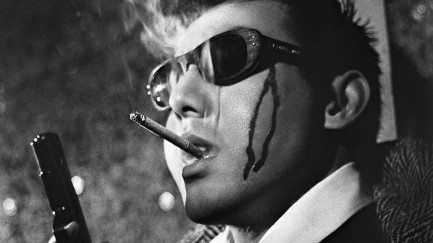
| Vintage Pulp | Dec 24 2016 |

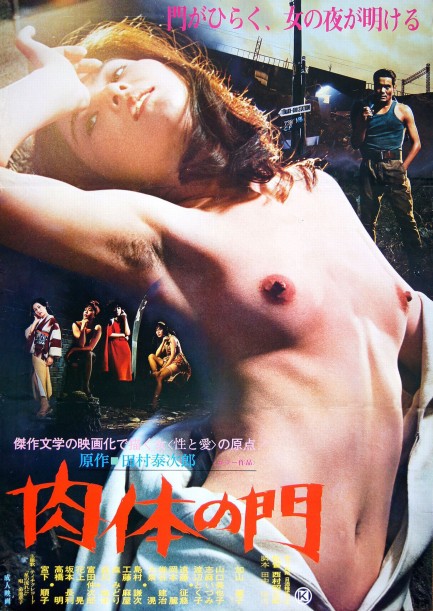
This dramatic poster was made for Nikutai no mon, aka Gate of Flesh, a movie based on a 1947 novel by Japanese author Taijirô Tamura. The book has been filmed five times. The most famous version was made in 1964 with Jo Shishido and Yumiko Nogawa earning acclaim for their lead roles in what was a serious and artistic film, but the above promo is for the 1977 roman porno version starring Reiko Kayama, Izumi Shima, and Junko Miyahsita. Needless to say, the two films diverge rather sharply. However, we need to point out, as we do periodically, that roman porno isn't porno—it's softcore. The “roman” in roman porno is short for “romantic,” and though the movies aren't typically romantic in the normal sense, they aren't explicit. Such depictions were illegal in Japan back then, and remain so today (though filmmakers use pixilation of sexual organs to skirt the law).
| Vintage Pulp | Sep 9 2014 |

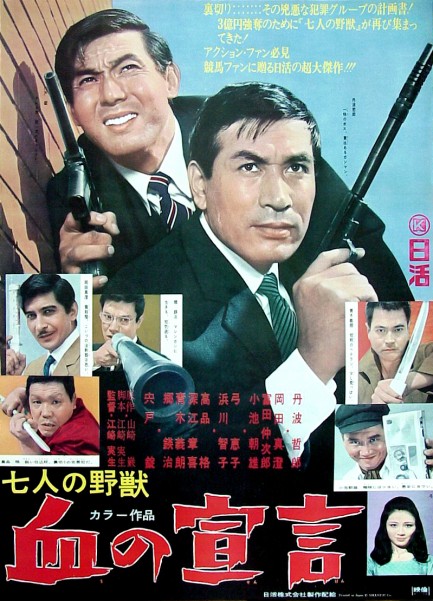
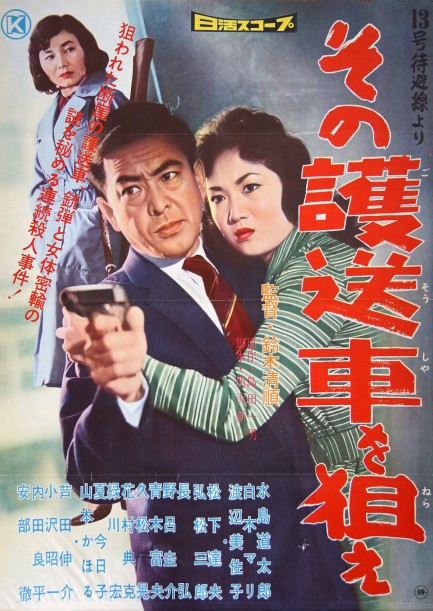
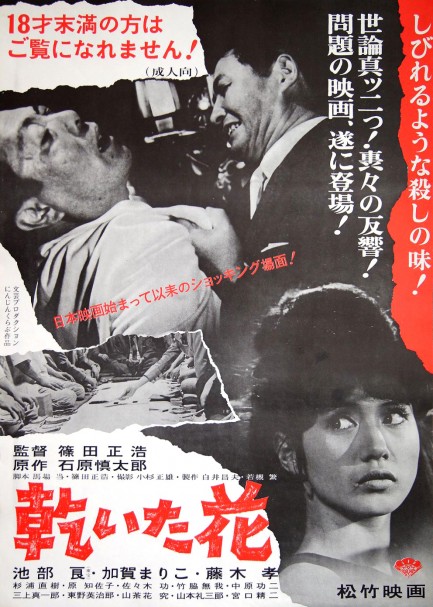

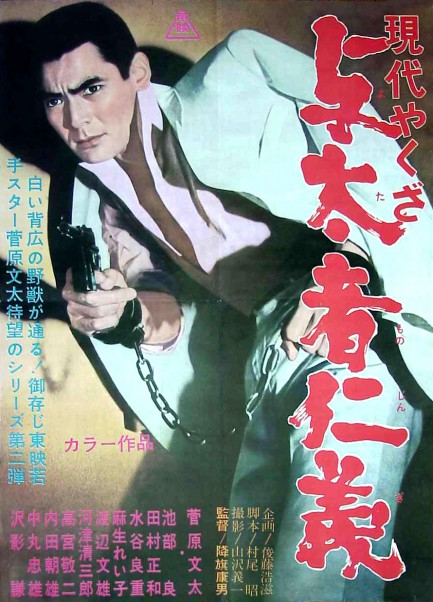
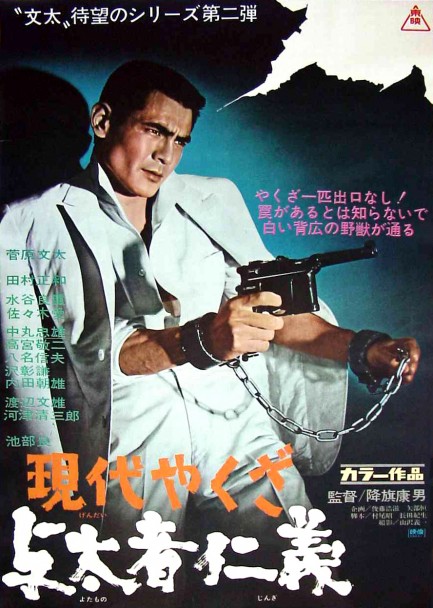
Above, six Japanese posters for 1950s and 1960s gangster movies. These are, top to bottom, Shichinin no yajû: chi no sengen, aka Return of the Filthy Seven, Sono gosôsha wo nerae: “Jûsangô taihisen” yori, aka Take Aim at the Police Van, Kawaita hana, aka The Pale Flower, Kutabare akutô-domo—Tantei jimusho 23, aka Detective Bureau 2-3: Go to Hell Bastards, and finally two versions of Gendai yakuza: yotamono jingi, aka Hoodlum Yakuza.
| Vintage Pulp | Jul 2 2013 |

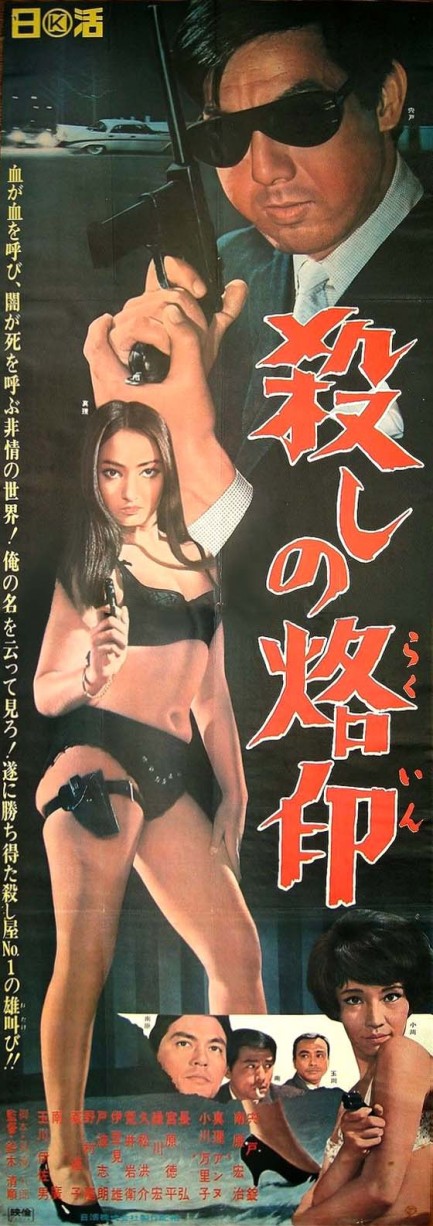
The above represents a bit of an addendum post. A few years ago we shared a poster for Koroshi no rakuin, aka Branded To Kill. This is a second promo poster we recently found and decided was worth a share. See the first poster along with a rundown of the movie here.
| Vintage Pulp | Mar 24 2013 |

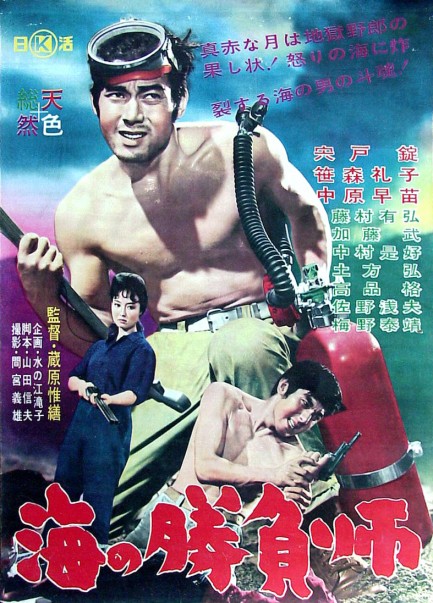
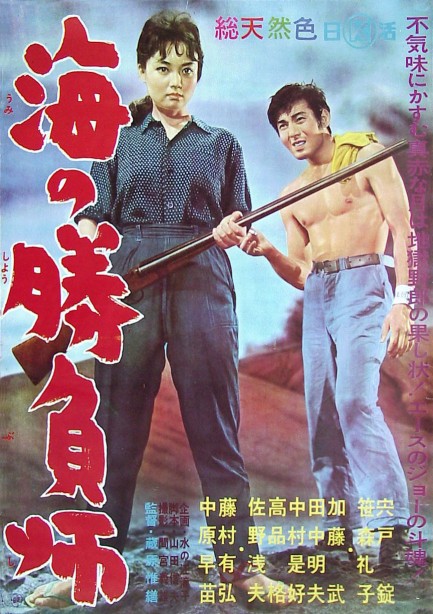
Above are two posters for 1961’s action adventure Rokudenashi kagyo. One of our readers Chris D. tells us: "Using the hiragana pronunciation key (the small letters that can be seen to the left of the title on the poster which has vertically-oriented type, the title says Umi no Shobu Shi, which roughly translates as "Showdown by the Sea." However, sometimes the English titles of Japanese movies are not direct translations, so the official international English title chosen for this flick was Tiger of the Sea. For the U.S. it was called Sea Fighters. Both posters are nice but the top one is particularly good. The movie, which is about a castaway who joins a gang of pirates, starred Jo Shishido, Nobuo Kaneko, and Hideaki Nitani. And big thanks to Chris for keeping an eye on this for us.
Update: We got an email from a reader named Chris.
I am writing regarding the two posters you have posted here. Both of these posters are, as Chris D. has stated, for the movie Umi no Shobu Shi. They are not for the film Rokudenashi Kagyo at all. Rokudenashi Kagyo is an entirely different film. You might not care, at this point, but I just wanted to let you know. Great site by the way! All the best,
Chris, as we've mentioned before, our analytics indicate to us that many visitors are digging through the site for research purposes. At least that's what it looks like to us. So it's never too late to get something right. These Japanese posters are especially hard, so thanks for your help and please keep visiting.
Update 2: the intrepid Chris C. has remained on the case and has solved it. He writes:
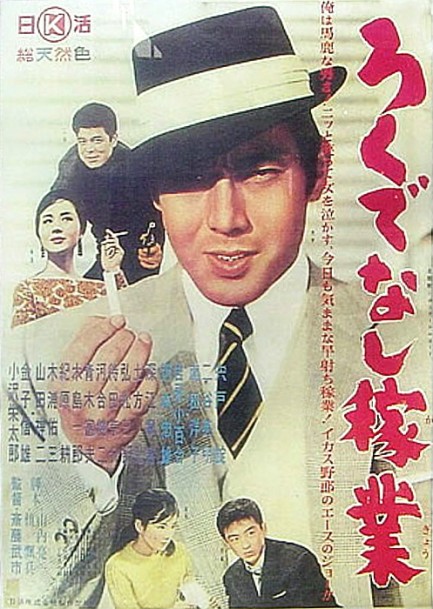 Thanks for your message. I am happy to have been of some help. Further research has indicated that IMDB is responsible for a lot of the confusion here. They have Rokudenashi kagyo listed incorrectly. There are three entirely different films in question here.
Thanks for your message. I am happy to have been of some help. Further research has indicated that IMDB is responsible for a lot of the confusion here. They have Rokudenashi kagyo listed incorrectly. There are three entirely different films in question here.1. Umi no shobu shi (Showdown by the Sea), which you have the posters for on your page. I have never seen this film and do not know much about it, other than its title and possible year of release (1960).
2. Rokudenashi kagyo (Good-for-nothing Business, or Bastard's Occupation), which is a modern (for the early 60's), light-hearted action romp featuring Shishido Jo and Nitani Hideaki. A somewhat poor image of the original poster for Rokudenashi kagyo (we've added it above at right ed.) is the first attachment here. The film was released in 1961.
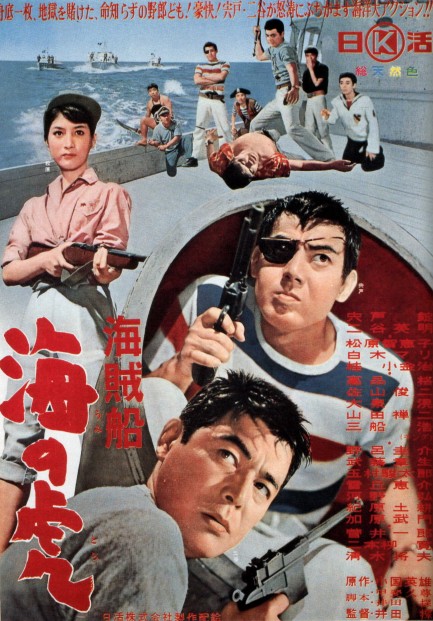
| Vintage Pulp | Jun 15 2010 |


Above is a poster for Seijan Suzuki’s 1967 underground gangster flick Koroshi no rakuin, aka Branded To Kill, with Jo Shishido and Annu Mari. This is about as stylish a movie as you could hope to see, with some stunning directorial flourishes and a cool jazz score. When Tokyo’s No. 3 Killer misses a mark because a butterfly lands in front of his rifle scope, he must pay the price for his failure. Pretty soon he’s facing off against No. 1 Killer, who was supposed to be a myth but turns out to be very real.
Shot in black and white, Koroshi no rakuin is all shadows, flames and frantic shootouts between guys in skinny ties. Suzuki goes on a whirlwind tour of Tokyo and its environs, seeking out every unusual backdrop imaginable for his meticulous and surreal set pieces. We think the movie is worth viewing for the fire stunt alone—a gangster holes up in a WWII bunker, and when it catches fire he flees while fully aflame and manages a fifty yard sprint down a rocky slope, running so fast that the wind of his passage pushes the flames behind him like the crest of some exotic bird.
Like everything else in Koroshi no rakuin, the moment is over all too quickly. That could also be said of its theatrical run—the film was a flop, and its failure resulted in conflicts between Suzuki and his studio Nikkatsu that got him blacklisted for ten years. In a sense, we can understand Nikkatsu's disappointment—it's clear Suzuki didn't take his assignment to direct a gangster film as literally as he might have. But as always, the most important critic of all is time, and Suzuki’s nervous, absurdist, disjointed noir masterpiece has survived. Koroshi no rakuin opened in Tokyo today in 1967.